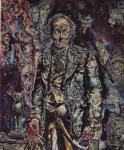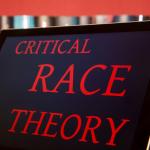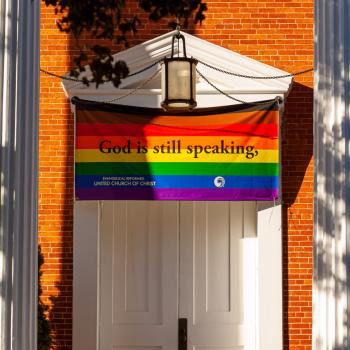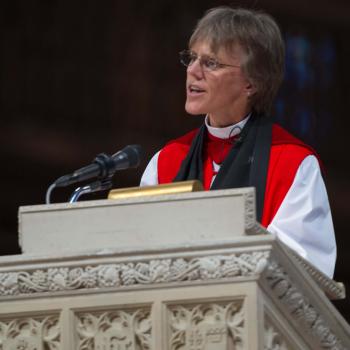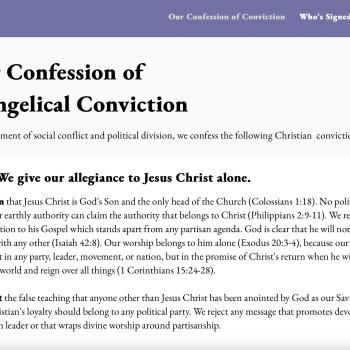In his seminal analysis on the rise and dominance of secularism in the West, A Secular Age, Catholic philosopher Charles Taylor explores the thought of controversial Roman Catholic theologian, Ivan Illich. For Illich, who fled Austria in 1942 and was ordained a priest in 1951 in Rome, the greatest threat to the Gospel was the institutionalization of Christianity, especially in its modern form. Illich’s critique of the Church, not just in the West but throughout its oriental history, caused him to become a kind of religious dissident. This was in spite of the fact that his theological views remained relatively orthodox throughout his life.
As Taylor points out, “Christian civilization” or “what we used to call ‘Christendom'”(see Charles Taylor, A Secular Age, 737), was for Illich a persistent historical manifestation of a corrupted Christianity. Illich’s criticism of Christendom goes far deeper, however, than Voltaire’s sarcastic, albeit accurate, attack on the Holy Roman Empire (according to the famed satirist, the “Holy Roman Empire” was neither holy, nor Roman, nor actually an empire). Unlike his agnostic predecessor, Illich, as a committed Christian, is gravely bothered by the idea of the Gospel becoming institutionalized. He fears the Christian life devolving into a mere set of codified rules enforced by an organizational authority (Taylor, 737). One might say that Illich is worried about love itself being formalized, as if love could be taught as one might teach math or chemistry.
This worry over a love enforced through authority and learnt by rote seems to be consonant with not only a kind of moralism that exists in the western Church today but that is emerging rapidly in the arena of secular education. The desire to train people in love seems to be at the core of the social justice movement in our culture, now even in our primary and elementary school education. Unfortunately, this desire, both in churches and public schools, does not seem to be tempered with wisdom, let alone with any appeal to the Holy Spirit as the source of such love. It is incumbent upon us as Gospel people to consider the potential fallout of such an institutionalized approach to love.
Illich and Christianity Institutionalized
Taylor, commenting on Illich’s critique, first points to Illich’s interpretation of the story of the Good Samaritan (Luke 10:25-37). According to Illich, Jesus is teaching in the parable about how social boundaries are broken down through a direct response to human need: the Samaritan directly recognizes the intrinsic sanctity of the wounded man and chooses to help him. He is not following some rule of right conduct. However, this transformation of the person that allows for boundaries to be crossed due to a change of heart quickly becomes formalized in the Church’s history into a kind of ethical principal, a universal moral rule to be followed. That rule is something like, “all human beings, without discrimination, are the proper beneficiaries of our help, [help] which ought to be given generously, following the example of the Samaritan” (Taylor, 738).
The ethic is not in itself bad, it is good. It is what ultimately leads to many other goods in society like universal human rights and social welfare programs. It become the basis for our “Modern Moral Order,” as Taylor conceives it. However, once the rule is created, something central is lost. That which was meant to bind us ontologically together as a community of personal love, a “network of agape,” (Taylor, 739) now becomes a way of merely fulfilling our moral duties:
We are led to shore up these [love] relations; we institutionalize them, introduce rules, divide responsibilities. In this way we keep the hungry feed, the homeless housed, the naked clothed; but we are now living caricatures of the network life. We have lost some of the communion…the spirit is strangled (Taylor, 739).
In other words, the ethical rule of going beyond our tribal boundaries for the sake of the other becomes unattached from the actual agape that motivated the parabolic Samaritan to rescue the Jewish victim. As a substitute for this loving in the Spirit, we create a societal structure that oversees the job of acting lovingly.
![[[File:Joseph Highmore (1692-1780) - The Good Samaritan - T00076 - Tate.jpg|Joseph_Highmore_(1692-1780)_-_The_Good_Samaritan_-_T00076_-_Tate]]](https://wp-media.patheos.com/blogs/sites/1412/2021/06/640px-Joseph_Highmore_1692-1780_-_The_Good_Samaritan_-_T00076_-_Tate-270x300.jpg)
In the life of the Church, the “ought” of this expression of love becomes primary, even to the point where failure to love properly becomes subject to the kind of criminalization and judicialization (Taylor, 740) of the medieval Latin Church. Stan Goff, commenting on the same passage in Illich, further illustrates this legalization of the spiritual sense of agape,
In Luke 10:25-37, Illich interprets the story to be one where the boundaries are erased in the new life, where one can see the divine in the face of the other whom one chooses, as the Samaritan chose a wounded and despised foreigner as a friend. In Luke, says Illich, the oaths of the Old Testament are combined with a covenant. In the new life, the covenant remains but the oath as a social glue is replaced by the Holy Spirit (not by law).
Stan Goff, Borderline: Reflections on War, Sex, and Church, 61 [Italics in the original].
Goff, agreeing with Taylor’s understanding of Illich, goes on to say that in the Middle Ages, “Codified law became the new basis of community conformity” (Goff, Borderline, 62). This, of course, in contrast to the law of the Spirit. In this sense there seems to be a return to the moral law as it was understood by the scribes and Pharisees. God’s law degrades into a system of oughts and ought-nots that could be rewarded but that more often than not is punished. Christianity, and its core message of love, is now institutionalized.
The Secularization of the System
As the explicit role of the Church starts to wane in the wake of the Enlightenment, a secular version of this institutionalized love grows. This emerging moral modernism, according to Illich, is a monstrosity– at heart it is a corruption of that which is most pure, Christ’s love for man (Taylor, 741). Now, those both inside and outside the church are moved not by the inner working of the Spirit of God to act lovingly, but by an external, secular institution that expects us to behave in such and such a way.
It is in this legalized spirit that we hear many a preacher in our own Evangelical churches today admonish their congregations to “love better!” The motivation behind such imperatives, however, is not so we might commune more fully with God and others in some metaphysically significant way, but so that our churches can look good to the expectations of an outside world.
Taylor sums up Illich’s thought on the codification of love, saying,
Codes, even the best codes, can become idolatrous traps, which tempt us to complicity in violence. Illich can remind us not to become totally invested in the code, even the best code of a peace-loving, egalitarian, liberalism. We should find the centre of our spiritual lives beyond the code, deeper than the code, in the network of living concern, which are not to be sacrificed to the code, which must from time to time subvert it
(Taylor, 743).
Of course, the Apostle Paul said as much in speaking of the Law of Moses in light of the new Law of Life,
Therefore, my brothers, you also were put to death in relation to the law through the crucified body of the Messiah, so that you may belong to another–to Him who was raised from the dead–that we may bear fruit for God. For when we were in the flesh, the sinful passions operated through the law in every part of us and bore fruit for death. But now we have been released from the law, since we have died to what held us, so that we may serve in the new way of the Spirit and not in the old letter of the law.
Romans 7:4-6
The idea that love and loving relationships can be mandated through law and enforced by an institutional entity overseeing that law is an idea that in the West is not limited to churches. Today, aggressive forms of the same idea are now prevalent in our secular spaces, most noticeably in our public schools.
The “New Law of Love”: Social Justice in Public Schools
Recently a new social justice curriculum was passed for K-12 education in the state of California. Devised and disseminated by an organization known for its moral judgements, The Southern Poverty Law Center, this new “Social Justice Standards” curriculum focuses on four core areas of childhood education: “Identity, Diversity, Justice and Action.” The two central goals of this new pedagogy are explicit:
This continuum of engagement is unique among social justice teaching materials, which tend to focus on one of two areas: either reducing prejudice or advocating collective action. Prejudice reduction seeks to minimize conflict and generally focuses on changing the attitudes and behaviors of a dominant group. Collective action challenges inequality directly by raising consciousness and focusing on improving conditions for under-represented groups.
TT-Social-Justice-Standards-June-2019[1]
Both “prejudice reduction” and “collective action” could be construed as acts of love, or, at least, motivating factors in loving action. If we judge prejudicially, we will usually fail to cross the boundary from our tribe to the other. And, if we fail to cross the boundary, we cannot act out love– love being an action, after all, and not just a feeling. However, progressing further into the new public school curriculum, we see exactly the kind of codification or institutionalization of “love” that Illich considered a “monstrous creation of (corrupted) Christianity” (Taylor, 741).
The call for prejudice reduction and collective action to right wrongs now takes a totalitarian turn in public education as “standards” are set up for how children should love people. Children, young children, will now be graded according to this new law of love. This new law, devised by an explicitly secular institution, is invested in constructing a certain kind of society– a society free of bias. Well, sort of.
The curriculum states, for example, that children “will develop positive social identities based on their membership in multiple groups in society” (italics mine). This accords with the “Identity” portion of the standards. Of course, it is not said how the development of a positive identity should occur if one finds oneself in a social group like the NRA or perhaps even “white European” or “traditional Muslim.” What if one belongs to a social group that is considered undesirable or, as the SPLC itself might claim, hateful? Or, what if one simply finds oneself in a group that rejects the idea of group identity entirely?
This already appears problematic on the face of it. Moreover, it is further required that “Students will express pride, confidence and healthy self-esteem without denying the value and dignity of other people” (italics mine). Can the kind of love needed to express both pride in one’s firmly held religious beliefs, beliefs say about human sexuality, as well as extend honor and dignity to those who live expressly at odds with those beliefs really be taught in the same way one teaches a child volleyball or algebra? What happens to the child if they succeed at the one, having pride about their identity, but fail at the other, dignifying the other? Should we expect legal ramifications?
Regarding the “Justice” component, the curriculum states that children “will express comfort with people who are both similar to and different from them and engage respectfully with all people” (italics mine). These again are all things that apparently will be graded, evaluated and assessed. The child is told as a pedagogical requirement: you will feel comfortable, with whomever is put in your presence! Where past educators were concerned primarily with correcting behavior for the sake of classroom cohesion and learning environment, current teachers will be intimately concerned with the inner working of the child’s heart. But, not only as any responsible and caring adult might be, but as adjudicators and evaluators. Report cards on the heart will be filled out and submitted. Even in the Catholic parochial classrooms of my childhood such a thing was unheard of!
The curriculum goes on, “Students will respond to diversity by building empathy, respect, understanding and connection” (italics mine). Here, internal dispositions usually connected with loving action, dispositions like empathy, will be very literally enforced through education. We should let this sink in. For what is being objectified here, what is being codified into a concrete school curriculum, is the judging, ranking, passing or failing of children’s emotions.
In the new social justice schools of the future (the present!), feelings are very literally “right” or “wrong.” However, the evaluator of the rightness or wrongness is not the God who made the child having the feelings. The standard of evaluation is also not the wisdom of an inspired Bible or even the norms of the religious community or biological family to which the child belongs. Instead, it is the tax-payer funded state school that judges the child’s emotions. It is government that has now assumed the authority to determine who is loving and who is not, who is righteous and who a sinner.
Conclusion: Raising A Generation of Secularized Pharisees
Of course this is not new to human culture. If anything it is but an extension of what Illich had already pointed out happened early in the life of the Church, the institutionalizing of the Christian life. Nevertheless, what is new, in America at least, is the migration of this codification of love and loving action from the domain of the church and the family to the public domain of the states school. The training of a child in the way they should go, once reserved for the local parochial school, the priest, pastor or rabbi and the biological family has now been fully secularized. 3rd and 4th grade teachers will be required to play the role once carried out by religious leaders and parents. Is this even fair to them one might ask, to take on such a sacred burden?
What do we have to look forward to with such a programmatic and spiritless attempt to correct the inherent corruption of man? What should we expect when the law of the Spirit is replaced not even by canon law but by the law of the land? One of the criteria suggested by the new standard should clue us in to what society might look like in 10-15 years time, “Students will plan and carry out collective action against bias and injustice in the world and will evaluate what strategies are most effective.” Collective action against injustice will be carried out by a generation of children, by that time thugs, who have no understanding of what justice even is, let alone any sense of the self-sacrificial and spirit-driven love that is needed to see it through. However, that they will be primed for action is certain. And act they will.
The “Scribes and Pharisees” of 2nd-temple period Judaism are often seen as the exemplar for the kind of spiritless, institutionalized moralism that Jesus came to throw down through His sacrificial death, His resurrection and His sending of the Spirit. This is the same kind of spiritless moralism that Illich warned about and that Taylor understood we could not entirely escape,
But even if we can’t fully escape the nomocratic-judicialized-objectified world, it is terribly important to see that that is not all there is, that it is in many ways dehumanizing, alientating; that it often generates dilemmas that it cannot see, and in driving forward, acts with great ruthlessness and cruelty. The various modes of political correctness…illustrate this every day (Taylor, 743).
However, when it came to the Pharisees, at least they had a long tradition and books of divinely inspired Law, prophecy and Wisdom from which they could glean something of the Spirit of God. What does our culture in the West have today if we do away with these, as we seemingly have done? If we are reconstructing something similar to what Jesus came to tear down, we are reconstructing it with tools less adequate to the task than those available to the Scribes and Pharisees with whom Jesus clashed. One can expect that the city we build with such tools may rival Babylon itself, or Rome.



